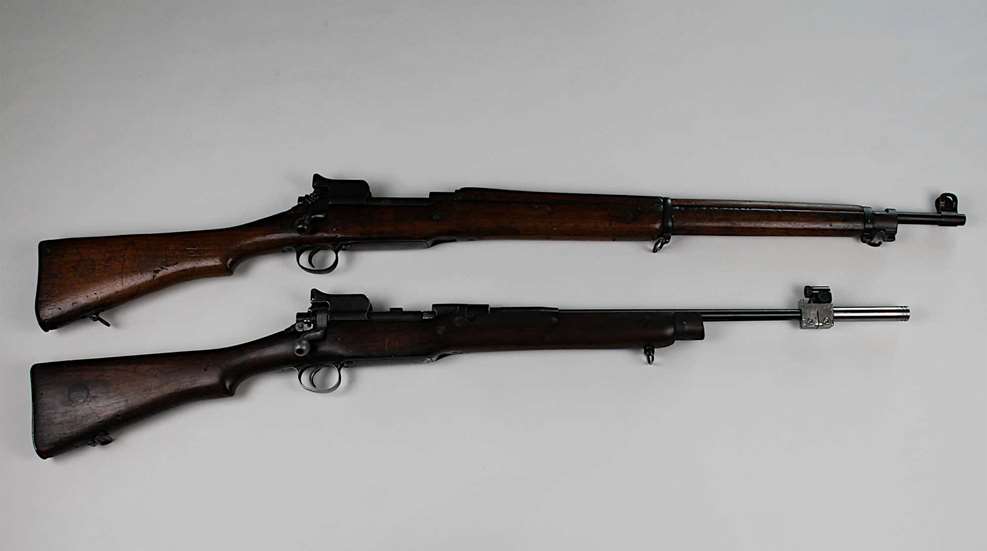
It’s not unusual for a gunsmith to bring a firearm back from the dead, so to speak. Following the mute clues presented by a modified Pattern 14 Enfield rifle, tracing its history shows it was modified, stored, revived, served in some capacity in two wars, rendered unshootable and finally exhumed and revived again by an anonymous Dr. Frankenstein gunsmith. Still, some mystery remains.
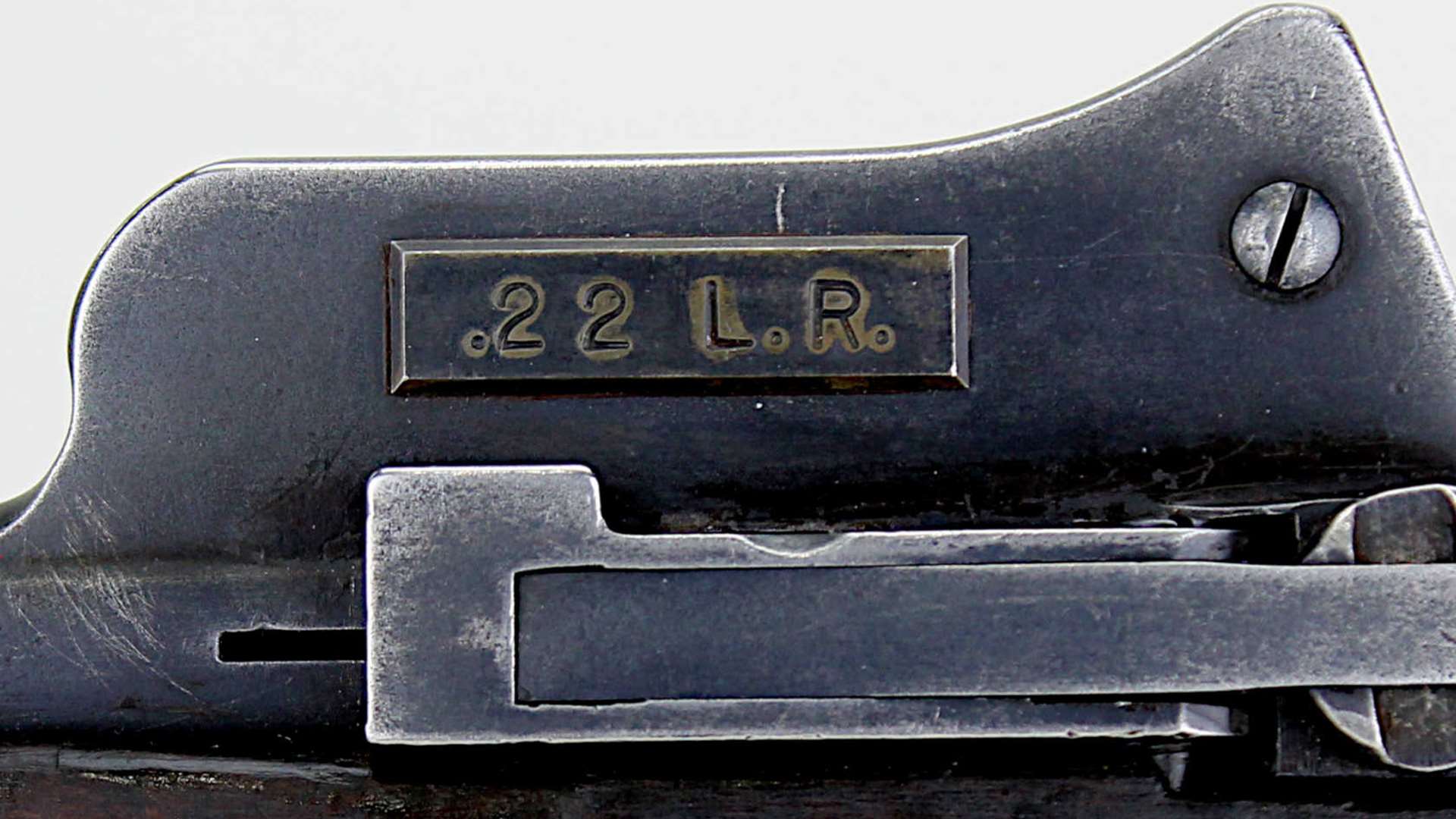
While it may offend aficionados to see a Pattern 14 Enfield modified to such an extreme, like Dr. Frankenstein’s monster in Mary Wollstonecraft Shelley’s classic novel, this particular rifle is actually a reanimation of the dead. The trigger guard, floor plate and receiver are marked, “DP,” meaning “Drill Purpose.” The barrel had been drilled through and plugged just in front of the receiver to deactivate or demil (“demilitarize”) it, to render the rifle unshootable. DP rifles also sported bands of red and white paint on the stock at the receiver to identify them, and a few tiny flecks of DP paint are still visible on this rifle’s stock. The DP procedure, happily enough, left the receiver intact, and so the reanimation was possible.
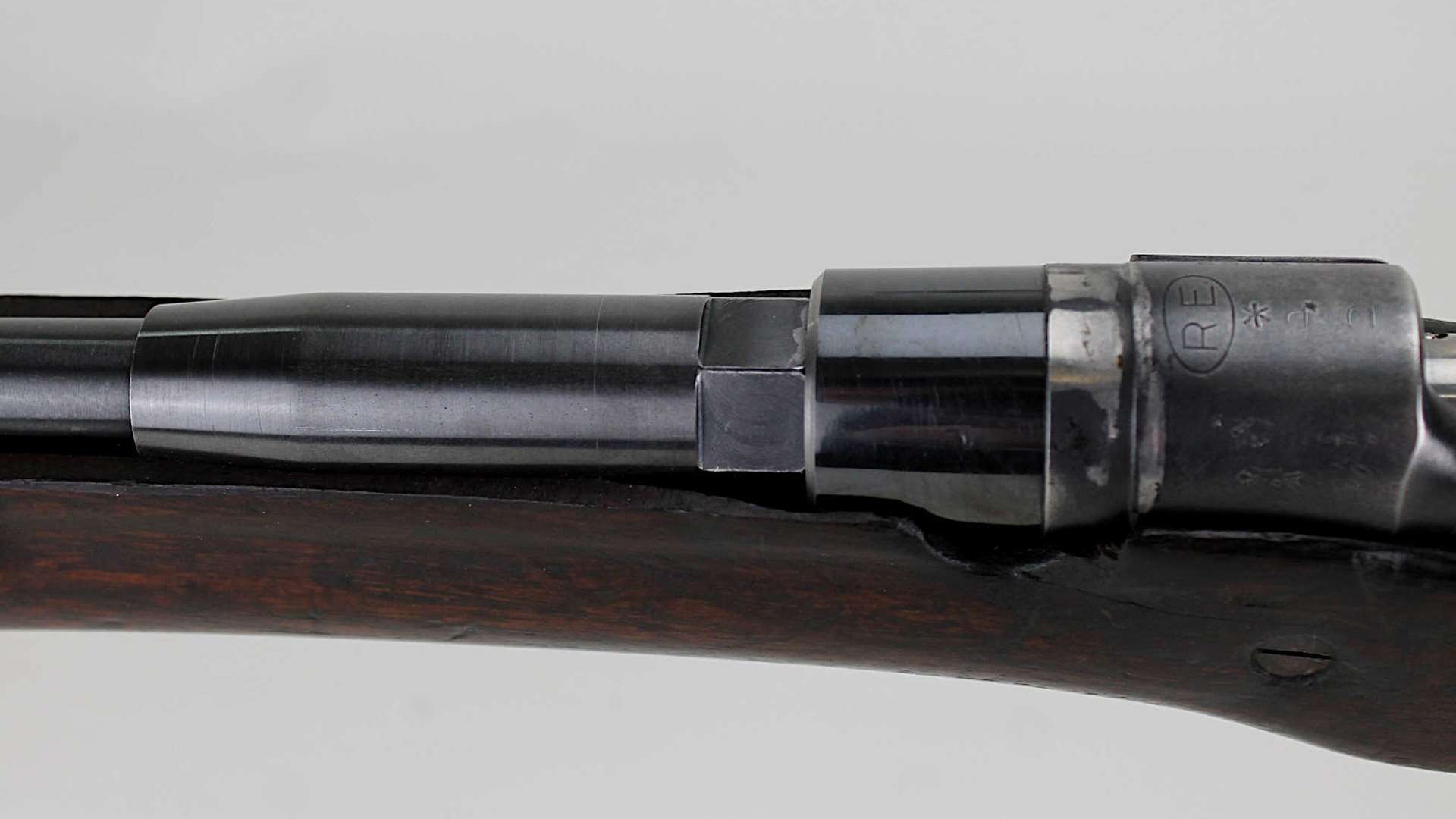
What sets this Pattern 14 (P14) apart is the small, steel “.22 L.R.” placard affixed to the left side of the protective sight “ear” on the receiver. British companies Westley Richards and A.G. Parker modified P14 rifles into single-shot .22 Long Rifle target rifles for civilian use, which included replacing the issue battle rear sight with a Parker-Hale 5B adjustable aperture target sight. But as this Frankenstein P14 retains its original battle sight, it doesn’t fit the description of a Richards or Parker civilian conversion. (Parker also converted Enfield No.1 Mk II and Mk III rifles into .22 LR training rifles for the British military, designated, confusingly enough, as “22RF Pattern ‘14” rifles.)
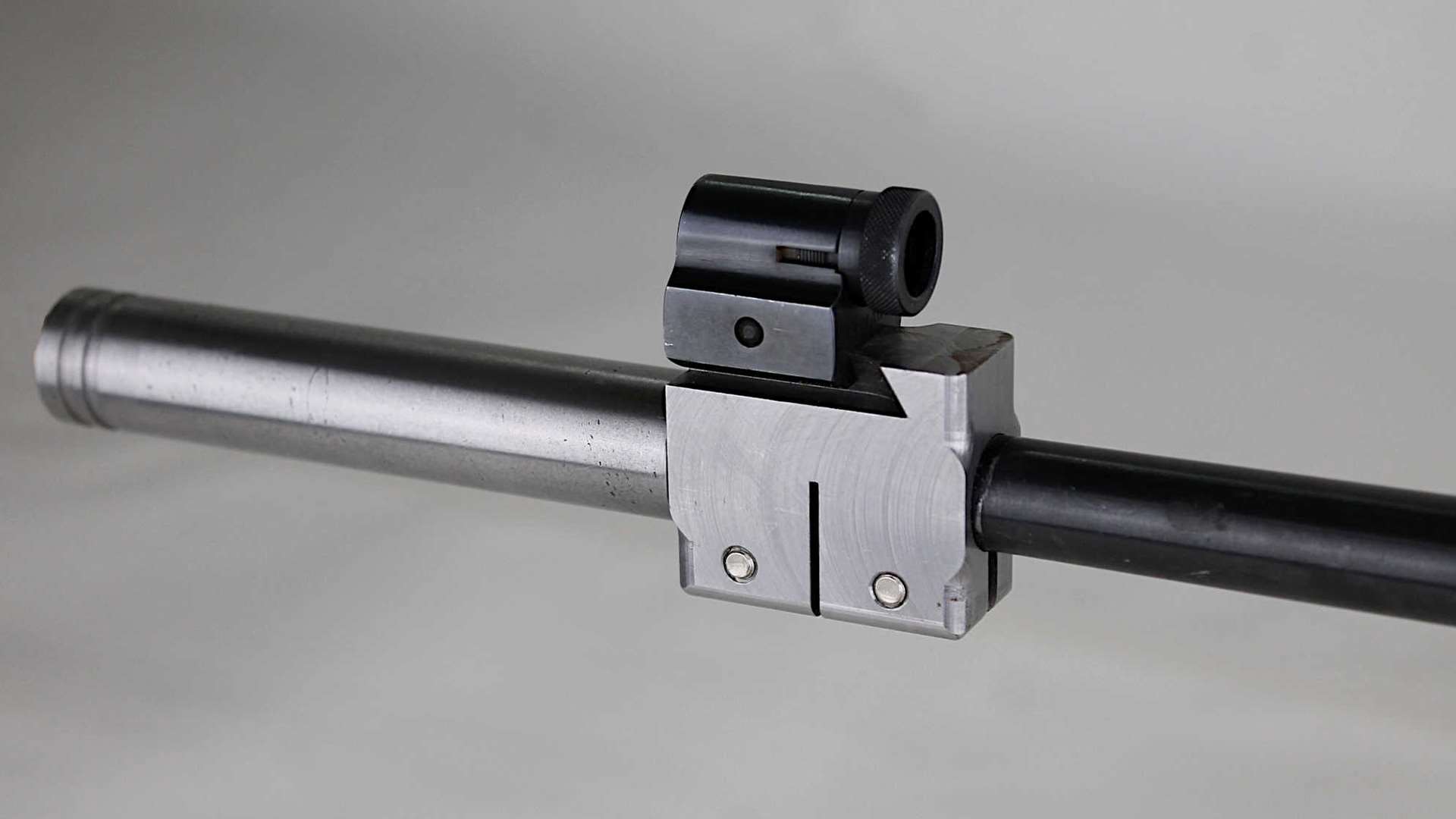
It's been reported that P14 Enfield rifles converted from .303 British to .22 LR were never used as trainers by the British military, but this rifle may show that information to be incorrect. It seems unlikely that the rifle would be demilled and then converted to .22 LR without also striking out the “DP” markings, as the purpose of the “DP” stamps is to show the rifle cannot be fired. It only makes sense that the rifle was converted to .22 LR before being demilled. The gunsmith’s Frankenstein barrel replacement (below) supports this notion. Also note the “.22 L.R.” placard on the receiver bears the same patina of age as the receiver itself, indicating the conversion likely occurred when the rifle was still fairly new. Retaining the original P14 rear battle sight, rather than installing a target rear sight, is logical for marksmanship training of new recruits.
Among British markings on the receiver are the “crossed flags” military proof, a broad arrow, and a crown over the letter “A.” These were applied by the British upon acceptance from Remington. What looks like an asterisk under the Remington “RE” in an oval is the mark of two broad arrows with points touching each other to indicate withdrawal from British service. The original brass disk on the right side of the butt stock has been removed and a wooden “plug” installed in its place. No mystery, this: it was part of the “Weedon Repair Standard” to which the British subjected P14 rifles (redesignated by the British in 1926 as “Rifle No. 3 Mk I”) taken out of storage on the eve of World War II, as was the removal of the volley sights.
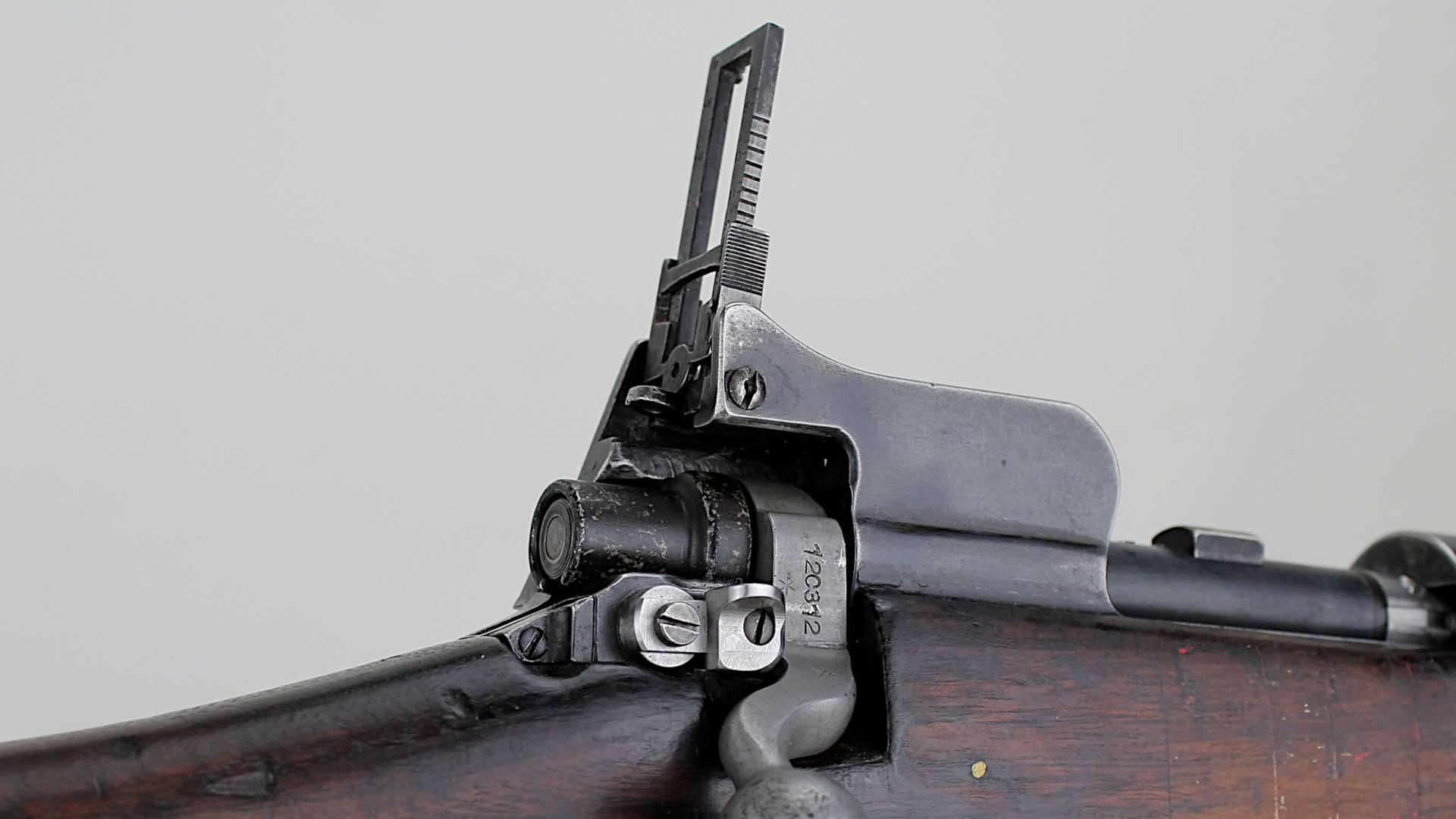
Piecing these clues together to trace this rifle’s history, it appears it left the Remington factory as a standard .303 British P14 (I found no reference to Remington converting P14s, nor to who might have affixed the “.22 L.R.” placard) and, arriving in England, received its British proof and acceptance stamps. The British converted it to .22 LR to train soldiers on the operation of the American-made rifle and put it into storage after World War I, subsequently re-activating it about 1939. It was then demilled—perhaps to train Home Guard personnel during World War II—and then finally released to the civilian market as military surplus. At this point, to the British government the rifle was dead and gone.
MORE MODIFICATIONS
A contemporary Dr. Frankenstein gunsmith acquired the demilled rifle and brought it back to life. The handguards and barrel band are discarded. The front sling swivel is not original to the P14. Pulling the stock revealed “Sturm, Ruger” stamped on the underside of the .22 LR barrel; clearly, the good doctor exhumed the barrel from his graveyard of parts guns to reanimate his creation.
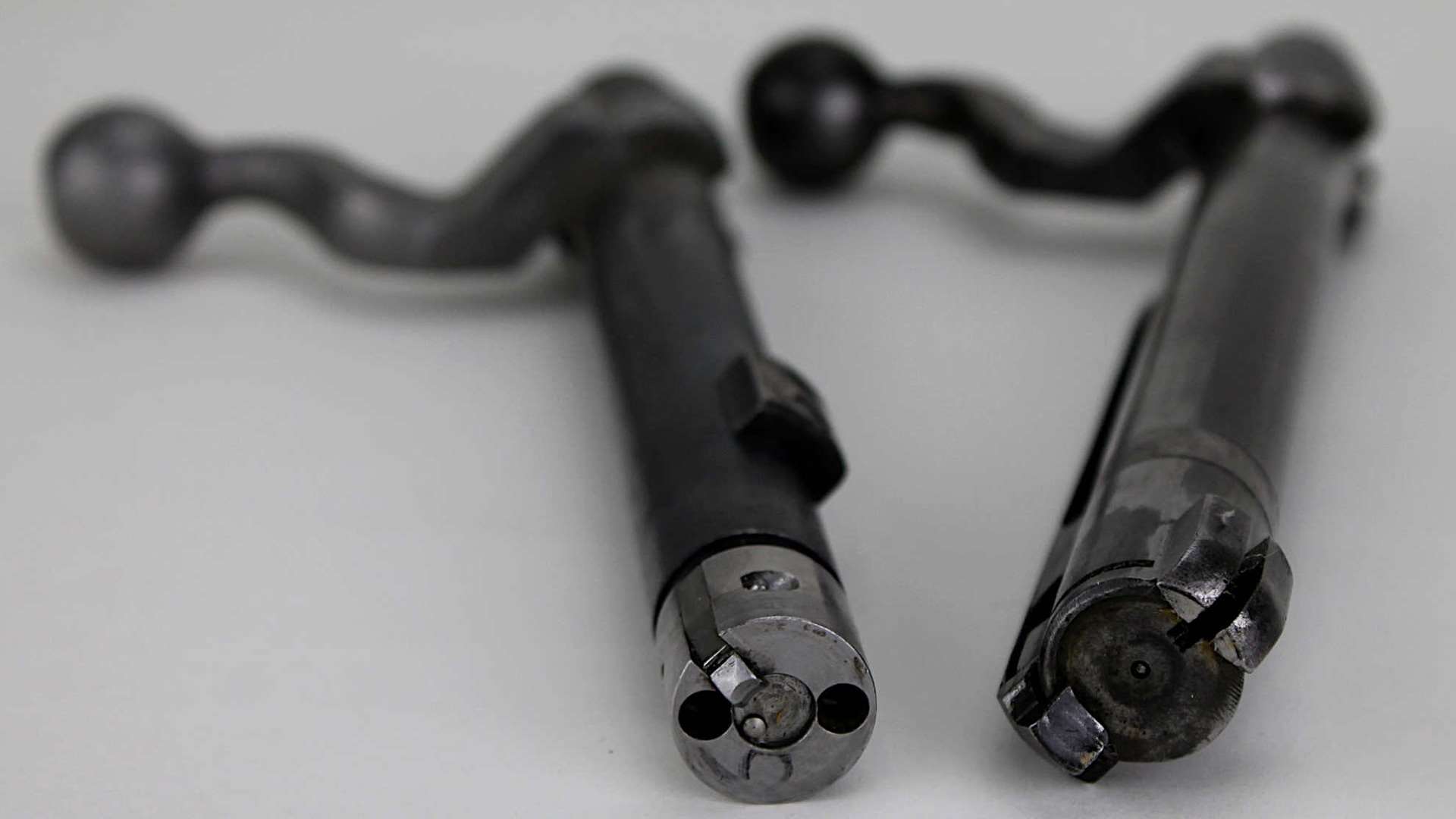
The real attention-getter, the front sight mount is a clever bit of machining. The gunsmith cut and relieved a steel block to accept a Lyman Model 77 globe front sight, then bored a hole through the block to allow the barrel to pass through. The block is split so that it clamps firmly onto the barrel with two bolts. The barrel itself measures 17 inches in length; the extension beyond the front sight adds another 4½ inches. Three custom-made adapters, two of which are obviously of more recent manufacture, mate barrel to receiver.
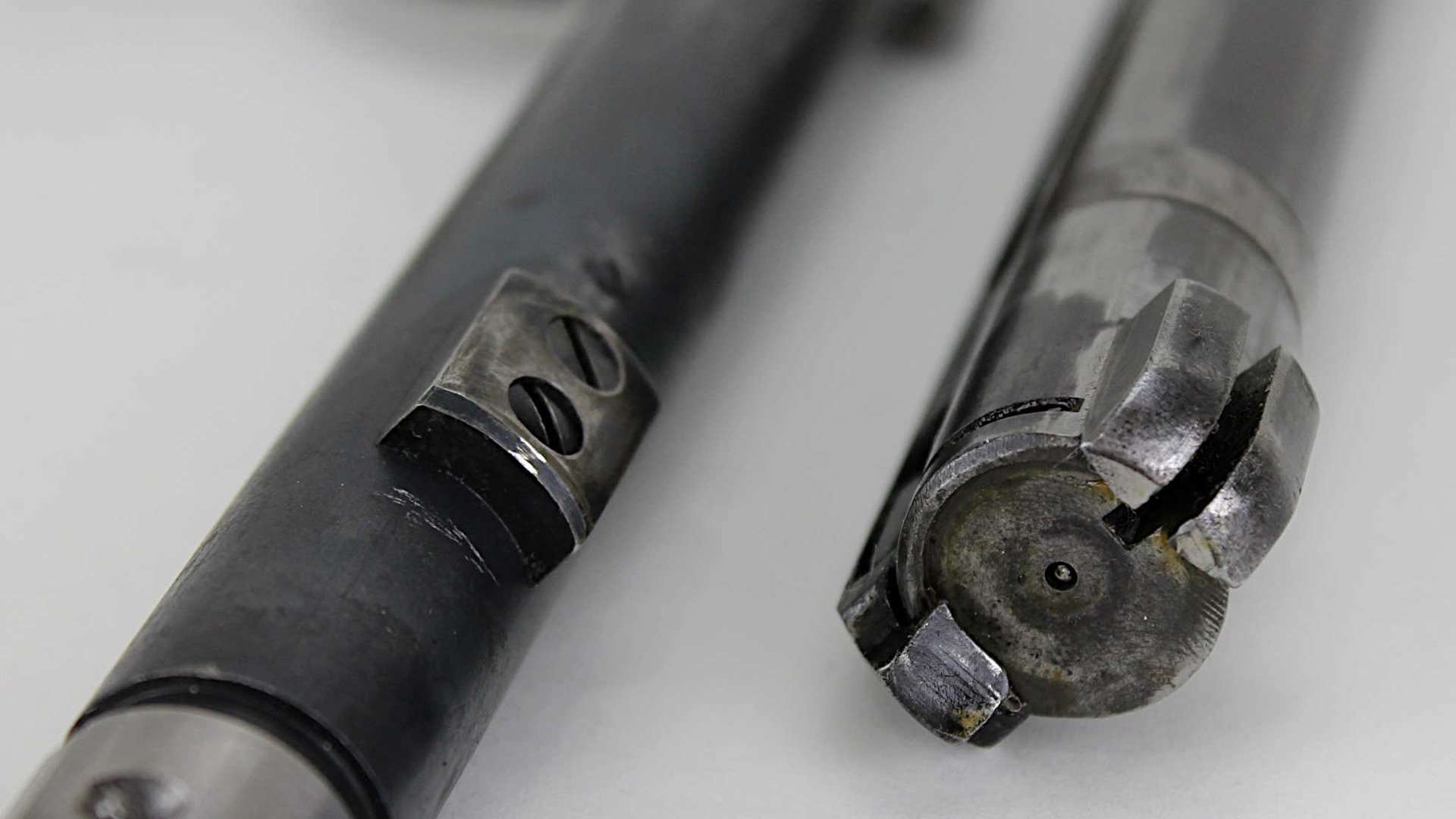
Changing the bolt from centerfire to rimfire required machining and attaching a separate custom bolt head without locking lugs. Among a half-dozen images of P14 bolt heads modified to shoot .22 LR found on the internet, all are different and none match the Frankenstein’s. As with most bolt action .22 LR rifles, the root of the bolt handle now serves as the sole locking lug. The serial number on the bolt handle does not match that on the receiver.
On original P14 guns, the left locking lug normally rides in the left raceway to support the bolt when working it back and forth. Now lacking front locking lugs, a square piece of steel, visible on top of the bolt when it is closed and engaging the left raceway when open, is screwed to the bolt to serve as support. Four holes drilled into the bolt bottom vent gas from a ruptured case downward into the magazine. The extractor is pinned in place, the firing pin a completely custom piece. There is no ejector—cases are picked out from the extractor with a fingertip. The safety is modified to work with the firing pin, locking the bolt handle in place when engaged, same as on the original P14.
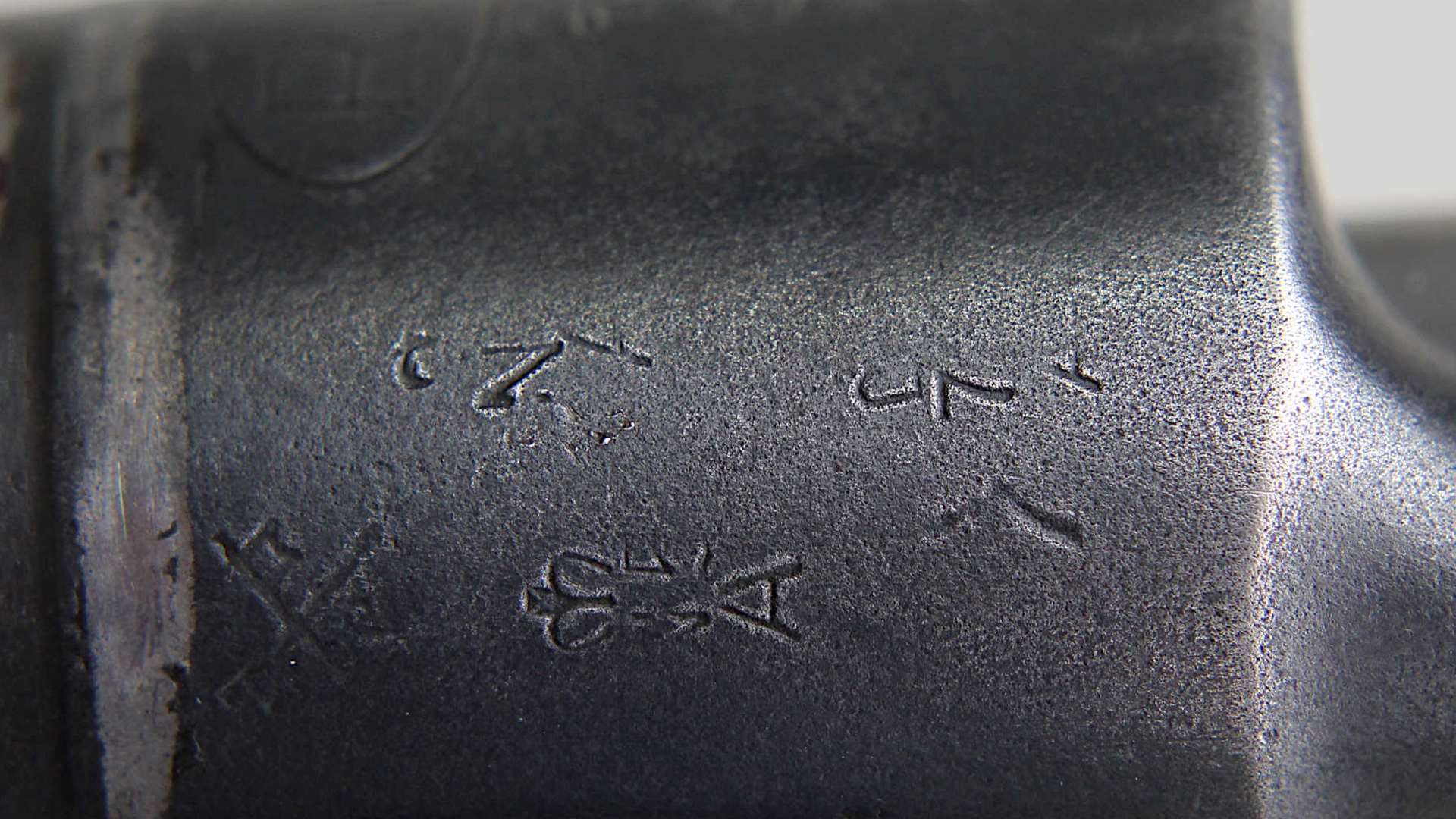
UGLY, BUT IT WORKS
A stitched-together Frankenstein monster, the rifle nonetheless works as a single-shot, though cartridges must be introduced directly into the chamber by hand, and ejection, as noted, is also by hand. Calibrated for a 300-yard zero with the .303 British Mk VII cartridge, the rear sight lands standard velocity .22 LR bullets quite low at 50 yards. Flipping up the sight ladder, the second aperture, set at 200 yards, brings impacts up. What with the battle sight’s large apertures and lacking a match chamber, groups are nothing to write home about.
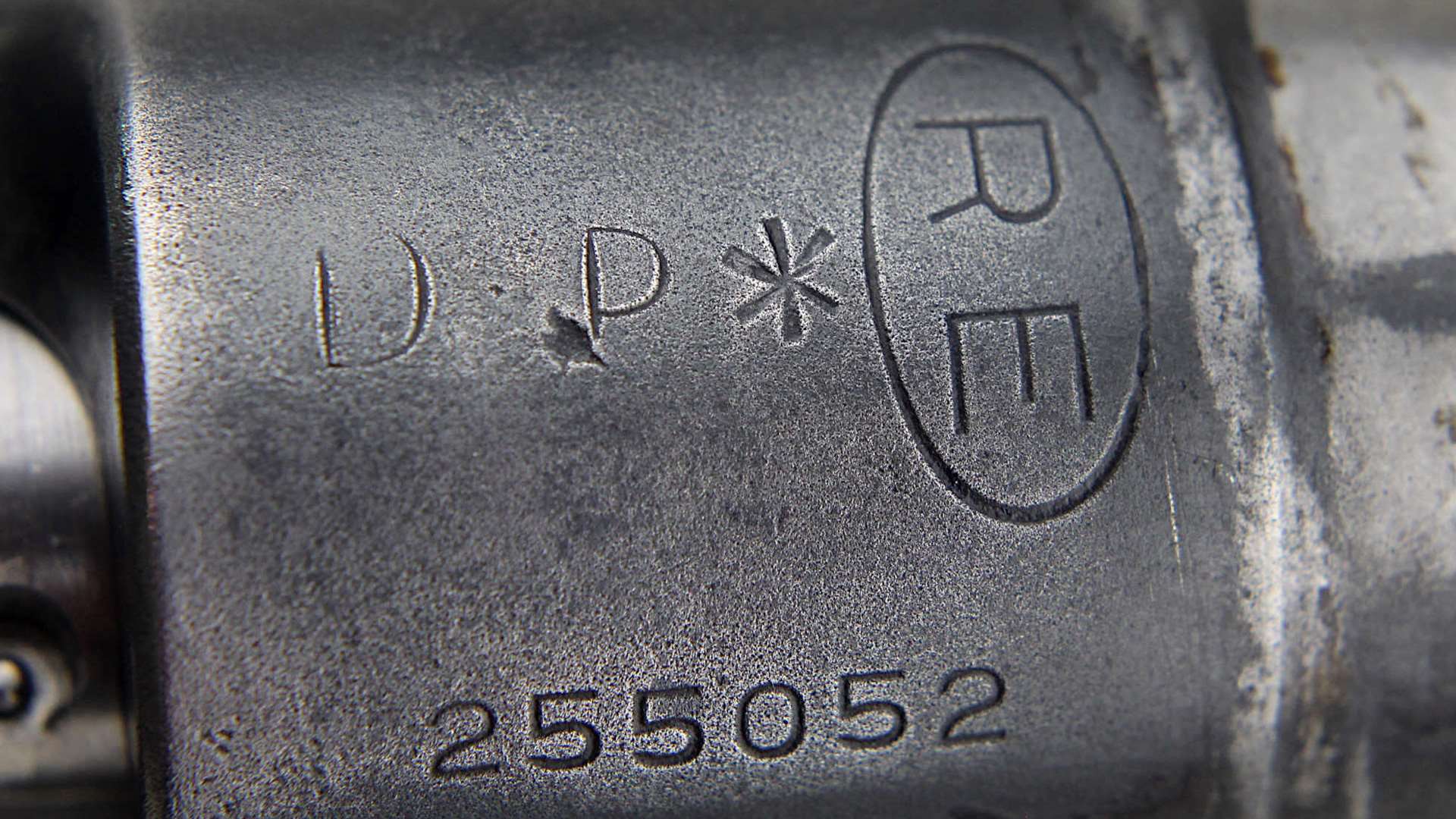
Ugly, extremely modified, not possessed of competition accuracy and a bit too heavy for a .22 LR hunting rifle, this Frankenstein is nonetheless an interesting, one-of-a-kind, shootable curiosity with a mute history that becomes mostly apparent when we understand what we are seeing. The remaining bit of mystery—who performed the original modification and affixed the “.22 L.R.” placard, and who used it as a training or target rifle—may be resolved with more research, and then the story will be complete.


































